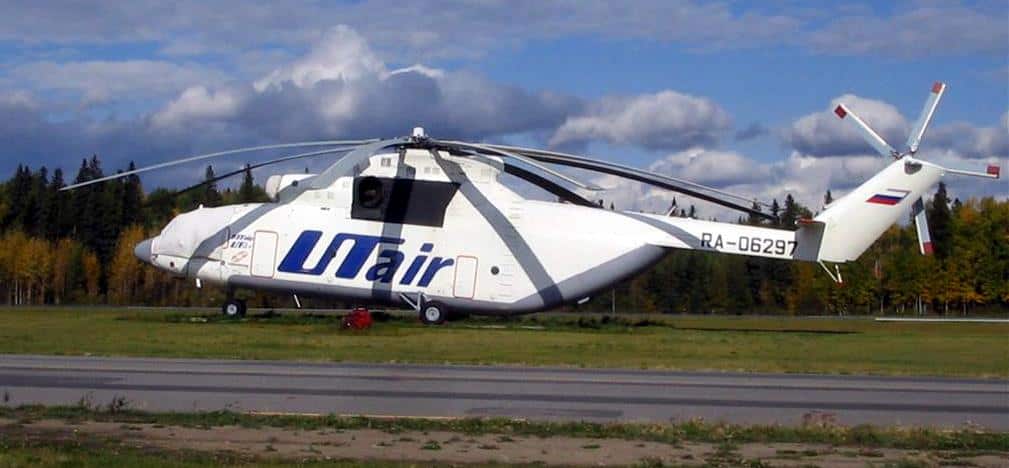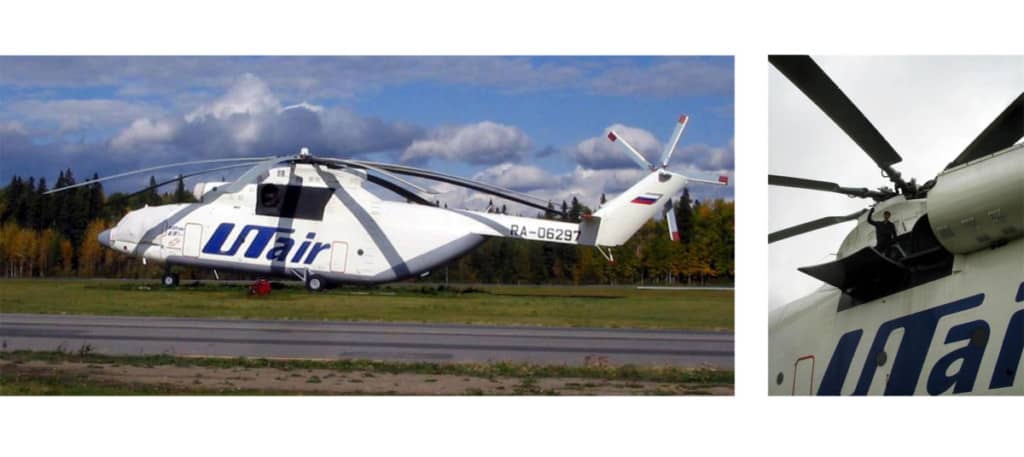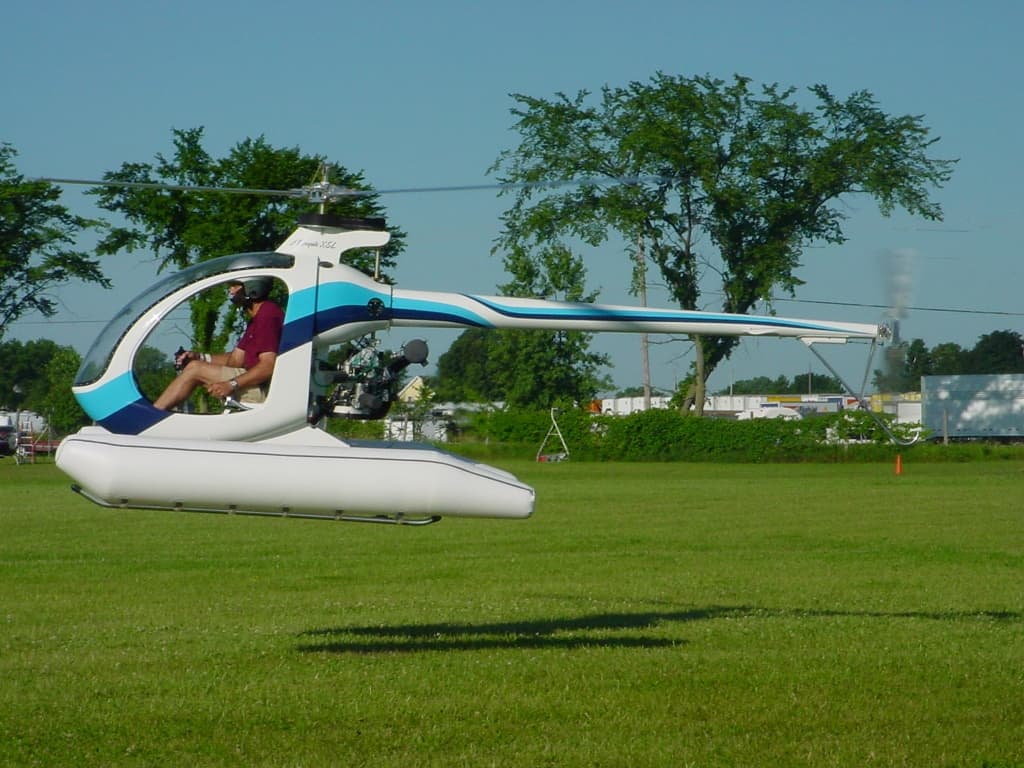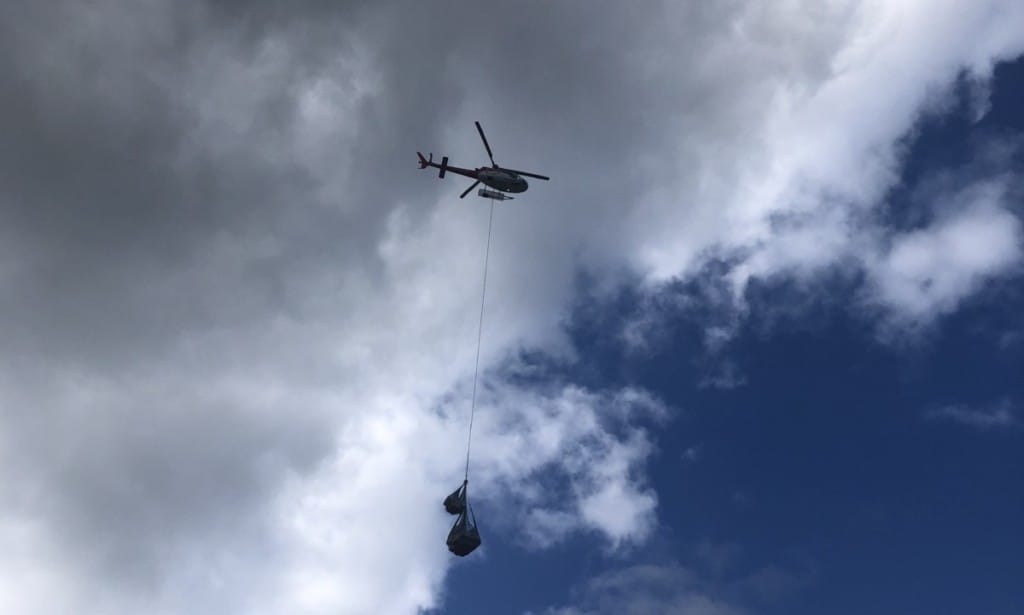
There is a tremendous array of helicopters flying around our planet in every size you can imagine, but how much do helicopters weigh? They need to be as light as possible to fly, but you may be surprised at just how much some of them can weigh!
Helicopters can weigh from 600 lb/275 kg all the way up to 123,400 lb/56,000 kg with every weight and size in between. Helicopters have a Basic Empty Weight and a Maximum Gross Takeoff Weight. The difference in the two is the useful load which includes the crew, passengers, fuel, baggage & cargo.
Helicopters are split into 5 main classes dependent on their weight:-
- Ultra-Lights: Helicopters weighing up to 254 lb / 1,15 kg Empty Weight
- Lights: Helicopters weighing up to 3,500 lb / 1,590 kg Maximum Gross Weight
- Intermediates: Helicopters weighing from 3,500 to 7,000 lb / 1,590 kg to 3,180 kg Maximum Gross Weight
- Mediums: Helicopters weighing from 7,000 to 12,500 lb / 3,1880 kg to 5,670 kg Maximum Gross Weight
- Heavies: Helicopters weighing over 12,500 lb / 5,670 kg Maximum Gross Weight
Helicopters range in size from personal single seat models up to the mighty Mil Mi-26 Russian Troop carrier:
| Helicopter | Empty Weight | Load Carrying Capacity | Maximum Gross Weight |
|---|---|---|---|
| Mil Mi-26 “Halo” | 62,170 lb 28,200 kg | 61,290 lb 27,800 kg | 123,460 lb 56,000 kg |
| Sikorsky CH-53E “Super Stallion” | 33,226 lb 15,070 kg | 40,274 lb 18,270 kg | 73,500 lb 33,340 kg |
| Boeing CH-47F “Chinook” | 24,580 lb 11,150 kg | 25,420 lb 11,530 kg | 50,000 lb 22,680 kb |
| Erickson S-64E “Aircrane” | 19,230 lb 8,725 kg | 22,770 lb 10,325 kg | 42,000 lb 19,050 kg |
| Leonardo AW101 “Merlin” | 23,150 lb 10,500 kg | 9,040 lb 4,100 kg | 32,190 lb 14,600 kg |
| Sikorsky S-92 | 15,500 lb 7,030 kg | 12,200 lb 4,990 kg | 27,700 lb 12,020 kg |
| Airbus H225 “Super Puma” | 11,590 lb 5,260 kg | 13,110 lb 5,940 kg | 24,700 lb 11,200 kg |
| Sikorsky UH-60M “Black Hawk” | 12,500 lb 5,675 kg | 9,500 lb 4,350 lb | 22,000 lb 9,980 kg |
| Sikorsky S-61N | 12,340 lb 5,600 kg | 6,660 lb 3,020 kg | 19,000 lb 8,620 kg |
| Leonardo AW139 | 7,990 lb 3,620 kg | 7,440 lb 3,380 kg | 15,430 lb 7,000 kg |
| Bell 412 EP | 6,790 lb 3,080 kg | 5,110 lb 2,320 kg | 11,900 lb 5,400 kg |
| Sikorsky 76C++ | 7,000 lb 3,180 kg | 4,700 lb 2,120 kg | 11,700 lb 5,300 kg |
| Airbus H155 | 5,770 lb 2,620 kg | 5,140 lb 2,300 kg | 10,910 lb 4,920 kg |
| Leonardo AW109 | 3,500 lb 1,590 kg | 2,780 lb 1,260 kg | 6,280 lb 2,850 kg |
| Airbus H125 “Astar” | 2,560 lb 1,160 kg | 2,670 lb 1,210 kg | 5,230 lb 2,370 kg |
| Bell 206BIII “Jet Ranger” | 1900 lbs 860 kg | 1,350 lb 610 kg | 3,250 lb 1,470 kg |
| Robinson R44 “Raven II” | 1,450 lb 660kg | 1,050 lb 470 kg | 2,500 lb 1,130 kg |
| Guimbal Cabri G2 | 924 lb 430 kg | 616 lb 270kg | 1,540 lb 700 kg |
| Robinson R22 BII | 880 lb 400 kg | 490 lb 220 kg | 1,370 lb 620 kg |
| Mosquito Aviation XE | 300 lb 135 kg | 310 lb 140 kg | 610 lb 275 kg |

What is Helicopter Empty Weight?
The empty weight of a helicopter is when the helicopter is weighed with all of its equipment attached. Items that are included in the empty weight are:
- Fuselage, Rotor Systems, Transmissions, Engine/s
- Avionics
- Emergency Floats – If fitted
- Search Lights – If fitted
- Hoist – If fitted
- Baggage Hold Extensions – If fitted
- Auxiliary Fuel Tanks – If fitted
Basically, as the helicopter rolls out of a hanger with no fuel on board is what constitutes its empty weight. It is an important number to know as the rest of the aircraft’s weight and balance builds on this figure.

Join My Newsletter & Get Great Tips, Information and Experiences To Help You Become a Superb Pilot!
What is Helicopter Maximum Gross Weight?
A helicopter’s Maximum Gross Weight is the heaviest a helicopter can be to lift into the air. It is set by the manufacturer during aircraft certification and is usually set to keep the aircraft within structural integrity, and/or maintain control during regular or emergency flight maneuvers.

Some aircraft have two maximum gross weights:
- Internal Max Gross Weight – This is usually a lower value and is when cargo and passengers are carried inside the aircraft.
For the Astar AS350 B2 that I fly the Maximum Internal Gross weight is 4,961 lb. - External Max Gross Weight – This is a higher weight as the load is carried via a hook on the belly of the helicopter. Because of this, the pilot can jettison this load in an emergency to instantly reduce the weight to the internal maximum gross weight. The external gross weight is usually limited by engine power and/or structural integrity of the aircraft.
For the Astar AS350 B2 that I fly the Maximum External Gross Weight is 5,512 lb
What is Helicopters Load Carrying Capacity?
A load-carrying capacity is the difference between its maximum gross weight and its empty weight. This is all the ‘Stuff’ that can be put in a helicopter and the more load-carrying capacity it has, the better it can be utilized. The most common items that make up a helicopter’s useful load are:
- Flight Crew – Pilot/s, Engineers, Load Masters
- Fuel
- Passengers
- Baggage
- Cargo
The useful load is what the pilot needs to balance to ensure the helicopter remains under its max gross weight. Many of the smaller helicopters can be limited to how much they can take. For instance, if you put a person in every seat and each person has a 50 lb suitcase there is probably a good chance the pilot will not be able to take full fuel.
This is where the bigger the useful load, the more the helicopter can do.
Pilots usually have to juggle the fuel and passengers to keep the aircraft within limits. If the trip is short enough, the pilot can take less fuel but take all the passengers and baggage in one trip.
If the trip needs more fuel to complete, the pilot may have to elect to do two trips or stop for fuel on the way if it’s available. No matter which option is selected it is always a balancing game of math for the pilot.
How Much Can Helicopters Carry On Their Hook?
When helicopters need to transport bulky, large, or heavy items they are mainly slung under the helicopter. Loads can be attached directly to the belly hook/s or be slung using a length of steel or synthetic rope known as a Shortline or Longline depending on its length.

The load on the hook must still fall into the useful load of the helicopter but when a really heavy load is needed it can be done just using the flight crew and a minimum amount of fuel.
The Astar the I fly can realistically lift around 2000lb on the hook, however, the Boeing CH-54 Chinook can lift over 20,000 lb! The bigger the load that needs to be slung, the bigger and more powerful the helicopter needs to be. In our case, we just break the loads down into more manageable sizes and sling them in multiple trips as we do not have a helicopter bigger than the Astar!
The hook and lifting systems on a helicopter are always oversized to ensure a healthy safety margin is maintained and the pilot will always reach the aircraft’s maximum power available or max gross weight before ever getting close to the capacity of the hook or slinging gear.
To Finish
Helicopters come in every size imaginable with every weight in between. Matching the helicopter to the job is paramount but staying within its weight limitations is a must. When a helicopter’s load exceeds its limitations then either the load must be reduced or a bigger helicopter is required.
The larger the helicopter, the more it weighs, the more it costs, the more parts require maintenance and the more fuel it drinks. I could not imagine the hourly flight costs of the Mil Mi-26 but at a purchase cost over $25M, you can bet you will also need very deep pockets to run it!
Further Reading
If you found this article interesting may I suggest these as well:

